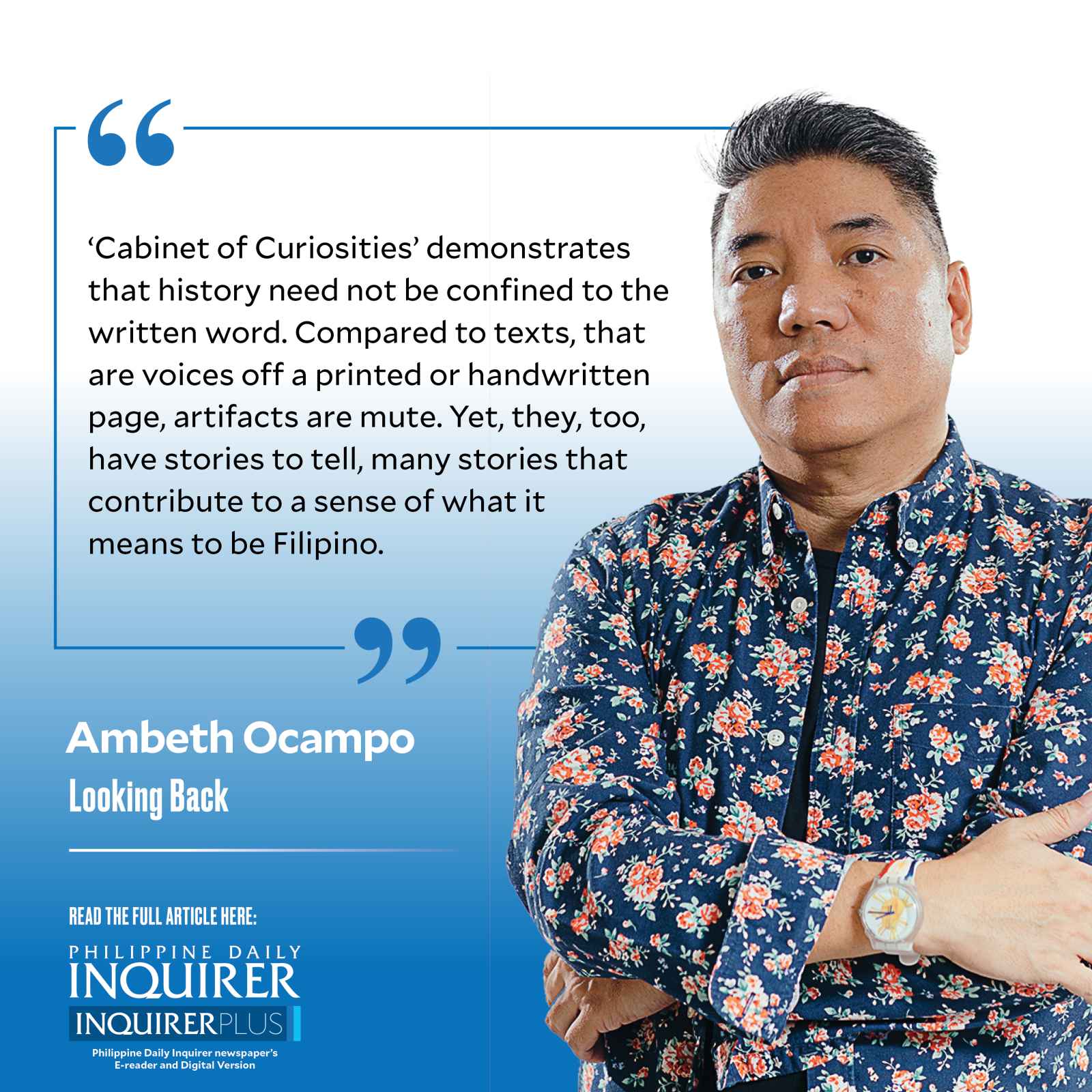‘Cabinet of Curiosities’

Ascending the winding staircase of the Inquirer building for the last time before it was torn down brought back many happy memories of people who helped this column see print for the last 32 years. One of the front pages hanging on the glass wall by the editorial desk reminded me of the 100-day, front-page series I wrote in 1998 on the events and personalities that figure in the birth of the Filipino nation. “Centennial Countdown” marked the run-up to the June 12 Philippine Centennial. It competed with the count of the National Centennial Commission, and even outlived a copycat series in a rival newspaper. After the series was compiled and published by Anvil as “The Centennial Countdown,” there was enough demand for a second printing where it was rebranded as “101 Stories of the Philippine Revolution.”
The stress of meeting a daily deadline for the front-page “Centennial Countdown” added on to the Tuesday-Thursday deadlines for “Looking Back” in the opinion-editorial pages of the Inquirer, made me swear never to repeat this stunt—ever! Yet, in 1999, against my better judgment, I wrote another 100-day, front-page series, “Millennium Countdown,” to bid goodbye to the long 20th century and welcome the dawn of the 21st century. Unlike “Centennial Countdown,” however, the “Millennium Countdown” took 23 years to see print under the title “Cabinet of Curiosities,” my latest book that will be launched this weekend at the Manila International Book Fair.
Looking back, the period from 1993 to 1998 was a glorious time to be a Filipino historian. More so for those whose area of specialization is on the heroes and villains of the Philippine Revolution and the Philippine-American War. “Centennial Countdown” was both praised and bashed by fellow columnists in the Inquirer, and rants kept the Inquirer “Letters to the Editor” lively for a hundred days. In retrospect, the series underscored the fact that, contrary to popular belief, the construction of the nation was neither simple nor preordained. It was, to use a contemporary term, complicated. It had its highs and lows.
After what I imagined to be the success of the 1998 series, then Inquirer editor in chief Letty Jimenez-Magsanoc sat me down and asked: “Why do you have such a negative view of the past?”
“I didn’t make this up,” I replied defensively, “everything I narrated are what the primary source historical documents tell me.”
That short exchange made me realize that history is not always what we want or imagine it to be.
Stung by Jimenez-Magsanoc’s question, I offered to make up for this negativity by writing something more positive. “Millennium Countdown” focused on one hundred objects that made us proud. My primary criteria for selection was that all of the artifacts must be relevant to the Philippines. Everything had to be man-made, not iconic natural wonders like Mayon Volcano, the Bohol Chocolate Hills, Palawan Underwater River, or the beaches of Boracay or Mindoro. I avoided image models promoted by the Department of Tourism. Neither would I use Philippine flora and fauna: narra, sampaguita, whale shark, tamaraw, tarsier, civet cat, and monkey-eating eagle already celebrated on our coins and banknotes. In focus were works by notable Filipino artists, writers, poets, architects, etc. Even folk expressions of Philippine culture like mats, baskets, and brooms. My mistake was not working with an outline, instead I decided to live dangerously and meet a daily deadline, so when time came to compile the essays, it became clear that my personal choices were uneven in terms of time period and geographic origin. A preferential option for artifacts outside “Imperial Manila” and of prehistoric heritage became evident but wasn’t comprehensive enough.
Rereading the essays 23 years after they originally appeared in the Inquirer, I felt that much had to be updated from recent research, others had to be deleted because they were not relevant anymore, many I wanted to revise completely. Images that accompanied the essays were not good or within copyright because they were sourced long before better ones were made available online or found within my own photo file. To cut a long story short, a selection from the original hundred made it into book form. My personal favorites were the prehistoric objects, which made me rethink the dictum, “No document. No history,” drilled into me by the late Teodoro A. Agoncillo. History, after all, is a story based on written records. Prehistory covered the period before written records, that is, before the 10th-century Laguna Copper Plate Inscription. “Cabinet of Curiosities” demonstrates that history need not be confined to the written word. Compared to texts, that are voices off a printed or handwritten page, artifacts are mute. Yet, they, too, have stories to tell, many stories that contribute to a sense of what it means to be Filipino.
—————-
Comments are welcome at aocampo@ateneo.edu
###—###
#ColumnName
















